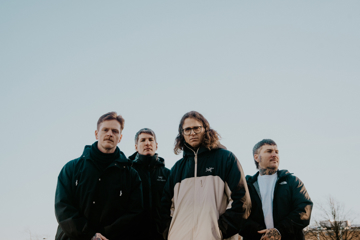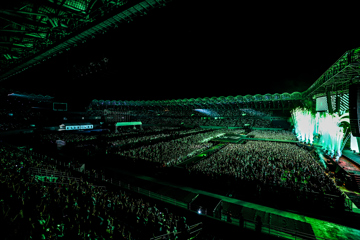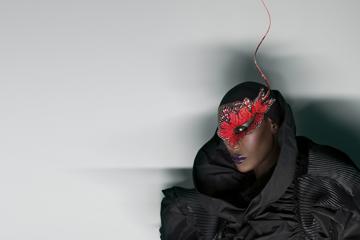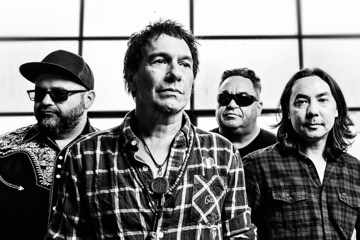REVIEW: 'Harry Potter And The Cursed Child' Is A Near-Perfect Play
"Brings the Wizarding World boldly... into the hearts of a whole new sweep of wannabe witches and wizards whose Hogwarts letters somehow got lost in the mail."

Pics by Matt Murphy
Harry Potter And The Cursed Child is a near-perfect play, generating the same kind of devotion in its fans in 2019 as when the novels sold out bookshops in the late ‘90s and mid ‘00s.
The crowds gathering at Melbourne’s Princess Theatre – Melbourne becoming the third city after London and New York to see the story of the Boy Who Lived stun audiences in yet another form – are rabid in their fervour, lining up around the corner to purchase house scarves and robes. The people entering the theatre in costume could very well be the exact same people who donned witches' hats and queued outside cinemas for midnight screenings for ten years of film adaptations.
I’m one of that generation – I remember the feeling of racing through the books, the playground littered with kids turning pages and gasping with every revelation, and boasting about how much they’d read the night before. The first came out in 1997, the last in 2007 – in that time we’d grown into teenagers: we could handle how long the books were now, and the grittiness of the subject matter, but we’d also found other things to obsess over, mainly where to meet boys and pilfer Double Blacks.
I remember the books teaching me about loss (RIP Sirius) and that girls could be quick-witted and clever and still find a sense of belonging, and could, with a little help from their friends, become brave. It’s actually a series that – along with Lemony Snicket’s Series Of Unfortunate Events – inspired me to write, going online at all hours to create characters and storylines with other people inside JK Rowling’s world. The fantasy of that world sparked something inside the imaginations of so many young people, including me, even if now it’s a bit naff to talk about it or your long-disused Pottermore account.
"What’s exciting to me now about Cursed Child is the way it invites an entirely new generation into its world of magic, hope – despite the ongoing threat of darkness – and precocious children."
Still, it took me too long to watch Deathly Hallows because, by 2011, the generation that grew up with the books was university-aged and had spent almost 15 years fascinated by a story that had at its crux the lifesaving power of maternal love. As one of the people who was caught up in what was then rightly named a phenomenon, what’s exciting to me now about Cursed Child is the way it invites an entirely new generation into its world of magic, hope – despite the ongoing threat of darkness – and precocious children. They’re brought into a community, into a full-to-brimming room of people excited to see pivotal moments from the books and films made immediate on stage, and to see how a group of old and new characters alike, 19 years on from the original series, grapple with family legacies, the discomfort of adolescence, and an unknown evil just out of sight.
Don't miss a beat with our FREE daily newsletter

Further, it brings people into the theatre who might have never seen a play before or even entertained the thought. And potentially, the wonder of it, the mega production values and time spent perfecting a world of magic and illusion – thanks Jamie Harrison – where the cast seem more often than not to vanish into thin air or are carried by invisible wires into the air, will have people coming back.
There’s immense theatrical potential in a world of magic – of exploding lollies and spells cast and flying trains – and in bringing back beloved characters and plot lines, beyond the core cast of Harry Potter (New Zealander Gareth Reeves, possessing the gravitas necessary to play Potter wallowing in the difficulty of parenthood), Ron Weasley (a jocular and ginger-tinged Gyton Grantley) and Hermione Granger (a stoic and magnetic Paula Arundel).
We’re meant to #KeepTheSecrets so I won’t go into detail about the exact who, what and where of the storyline – just that the whole thing builds and builds, from what seems like a source of simple dramatic tension involving an illegal Time-Turner – realised with some nifty tricks from Lighting Designer Neil Austin – and the Triwizard Tournament, to something truly gripping and exciting. The second half in particular is full of the same sense of impending danger, tinged with a sense of grief, that as a child made me feel like I was in a way trusted to handle seemingly adult emotions and fears.
A stunning score from Imogen Heap pulls together the scene changes meticulously choreographed by Steven Hoggett, while the set from Christine Jones is by necessity elaborate and unobtrusive, underscoring the action while still adding a kind of majesty to the setting – more often than not Hogwarts. But it’s the moments shared between the characters that make this production so vital – the whole series wasn’t about good triumphing over evil or even about a traumatised teenager with a lightning bolt scar, but about family and friendship.
The friendship between he misfit Albus Potter (Sean Rees-Wemyss), Ginny (a warm yet forceful Lucy Goleby) and Harry's son, and the long-limbed and gangly Scorpius Malfoy (William McKenna), the son of Draco Malfoy (Tom Wren, at first forbidding, then full of concealed warmth) and his late wife, Astoria, holds the story together. It’s a friendship, borne of teen awkwardness and the urge to push back against their family’s expectations, that we can easily believe and is sometimes sweet and earnest, or boisterous and funny, or tinged by twinned fear and ingenuity. Both Rees-Wemyss and McKenna have a bright and burning future ahead of them, such is the power of their performances here – their ability to bounce off one another and carry us all through the fear and the dark.
Harry Potter And The Cursed Child is a production worthy of all the hype and all the excitement, which brings the Wizarding World boldly into the present and into the hearts of a whole new sweep of wannabe witches and wizards whose Hogwarts letters somehow got lost in the mail.







